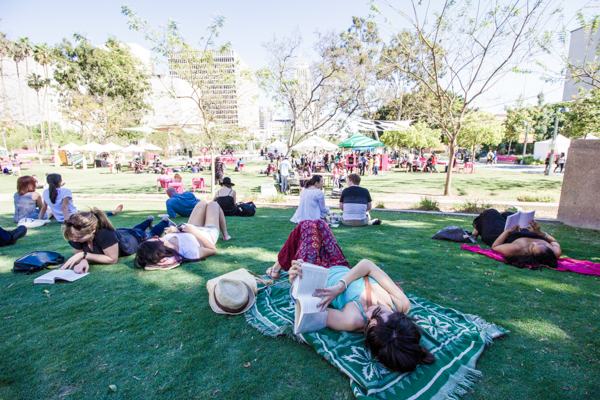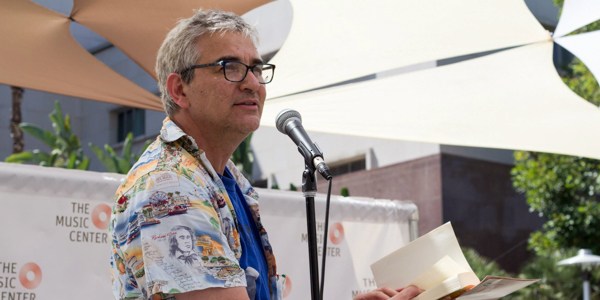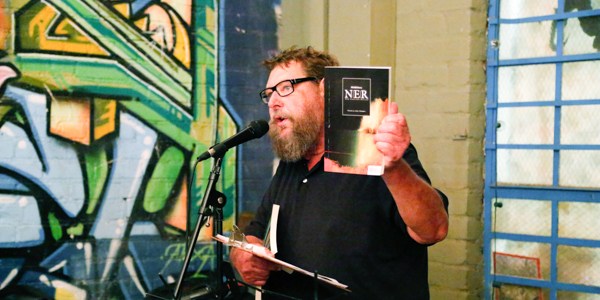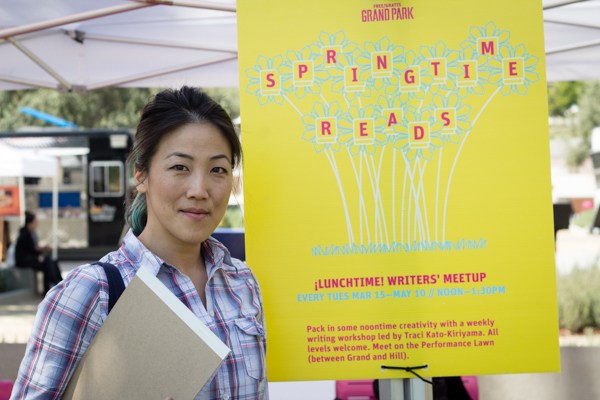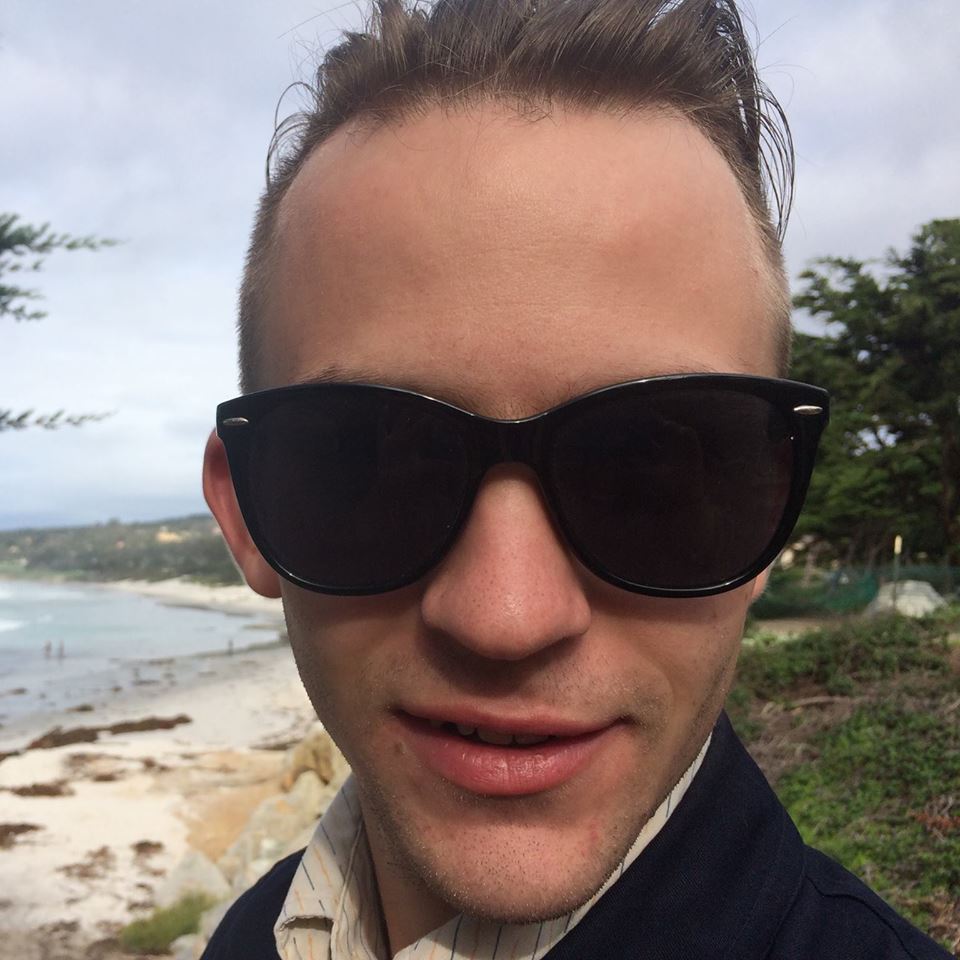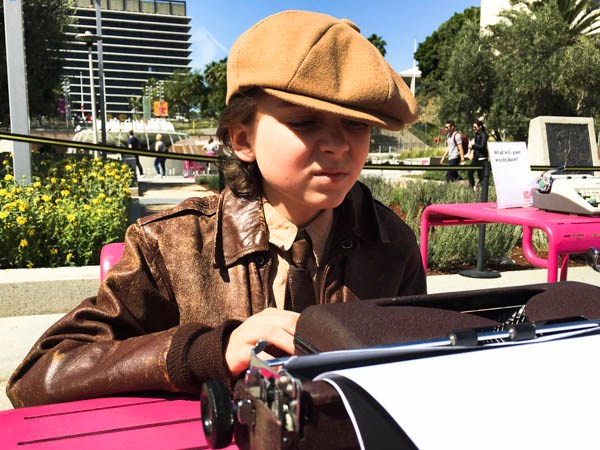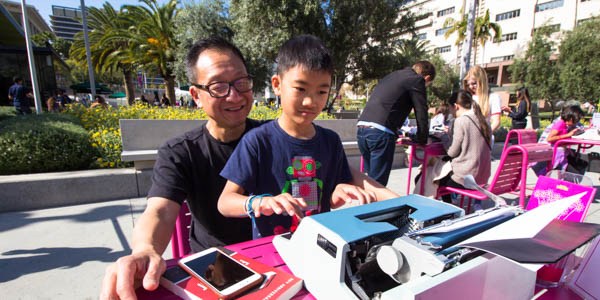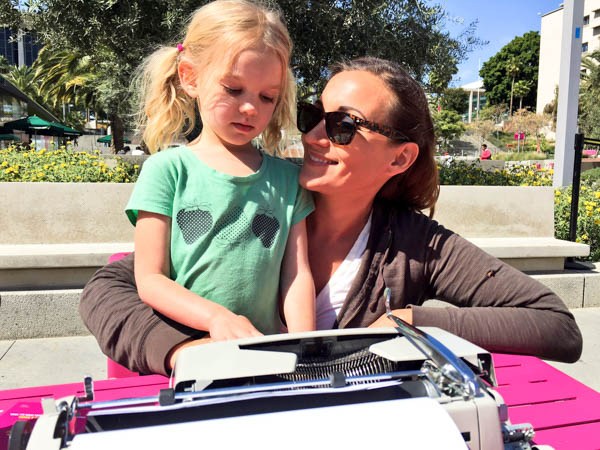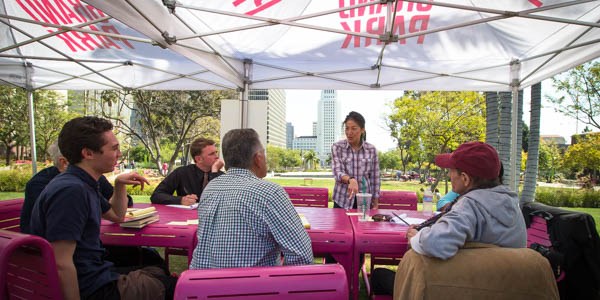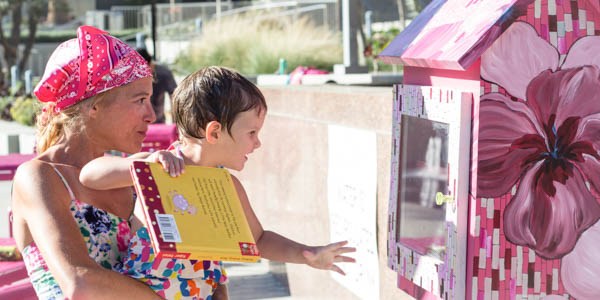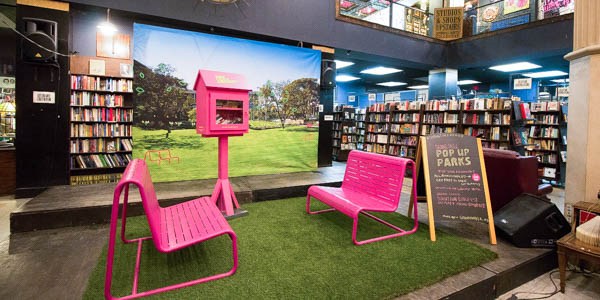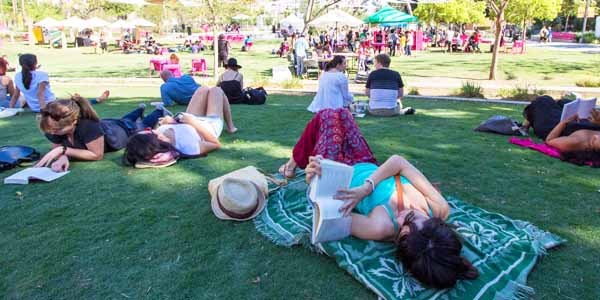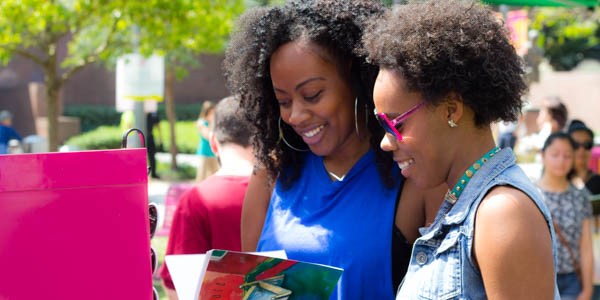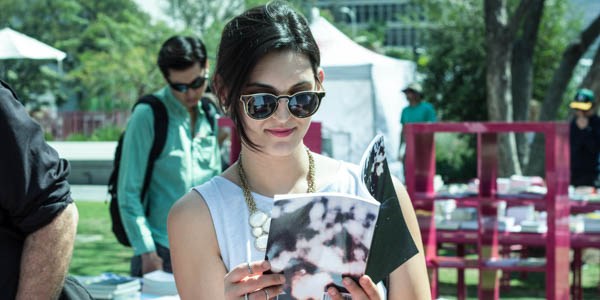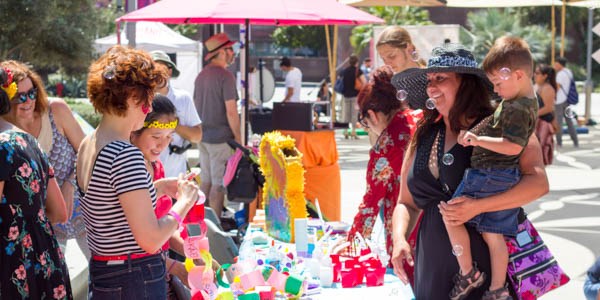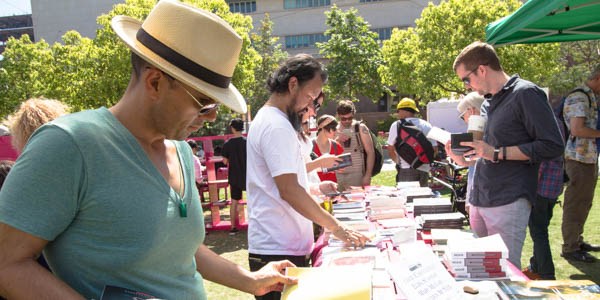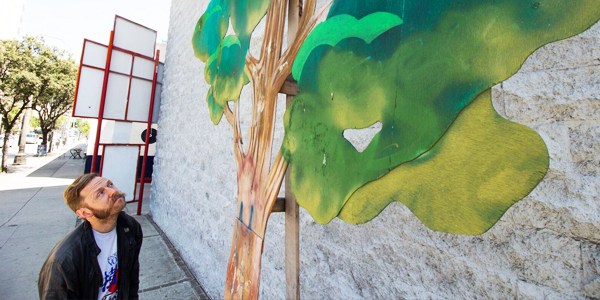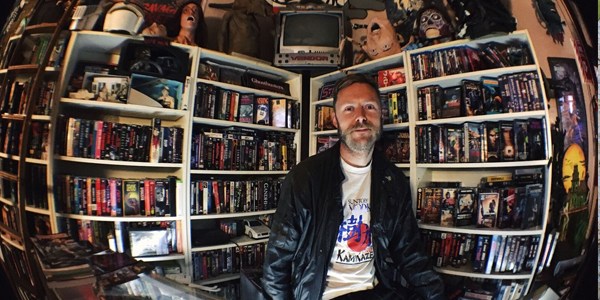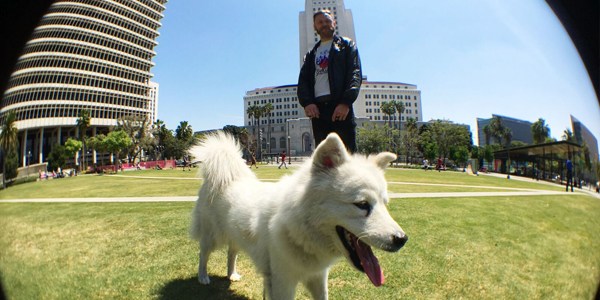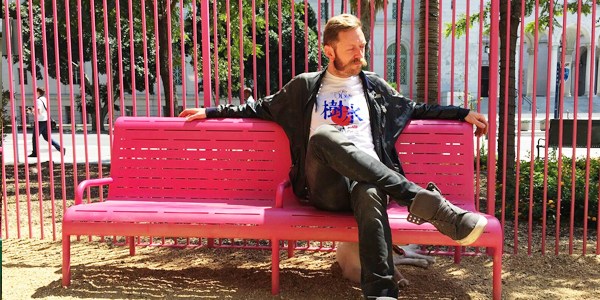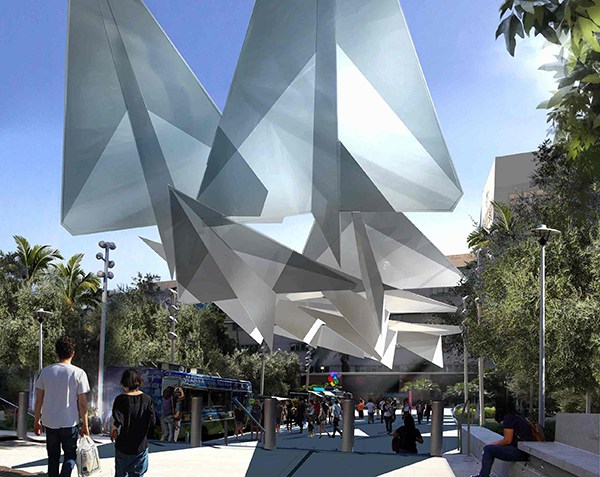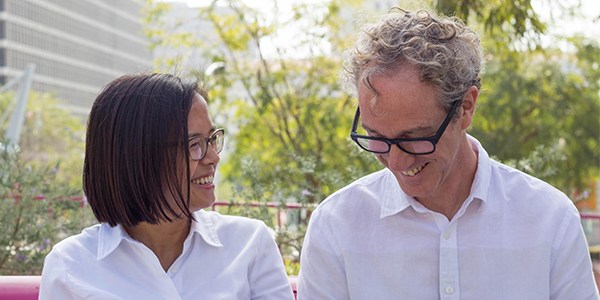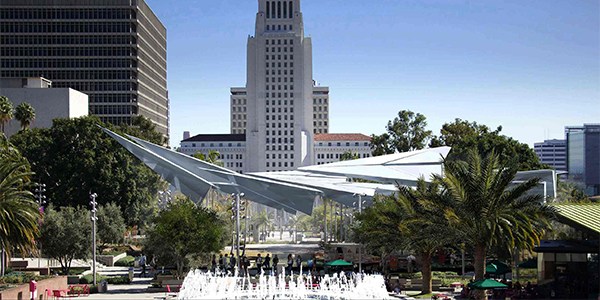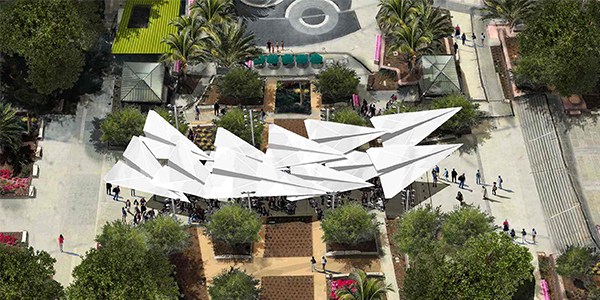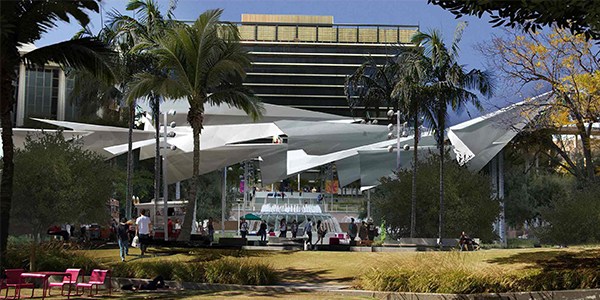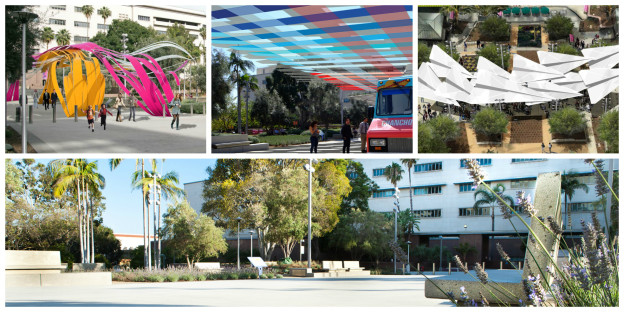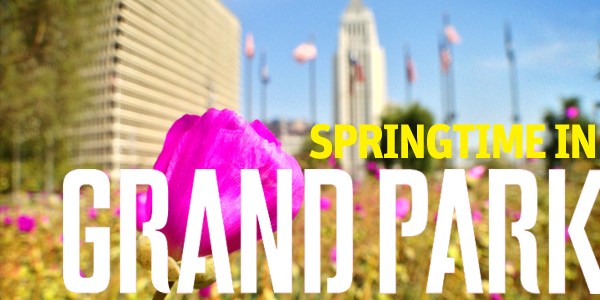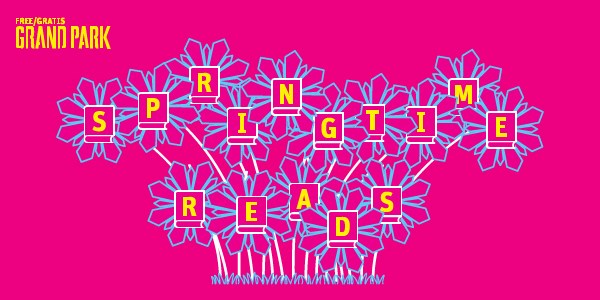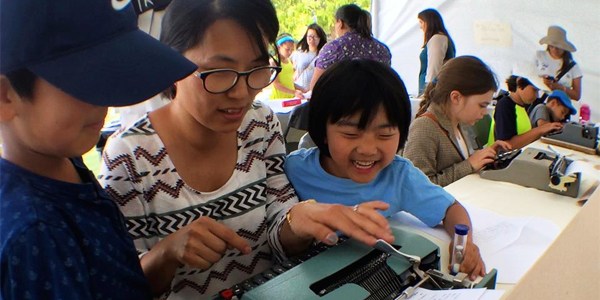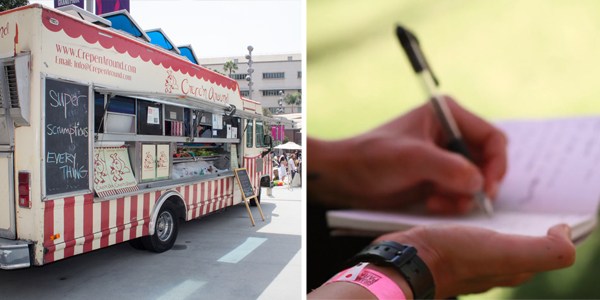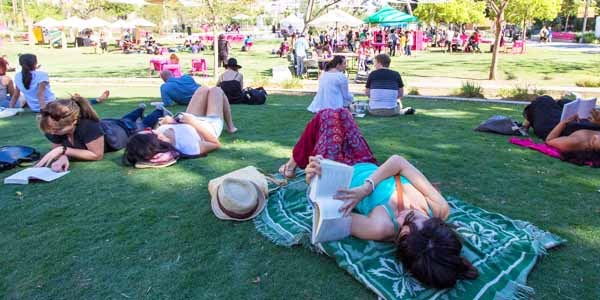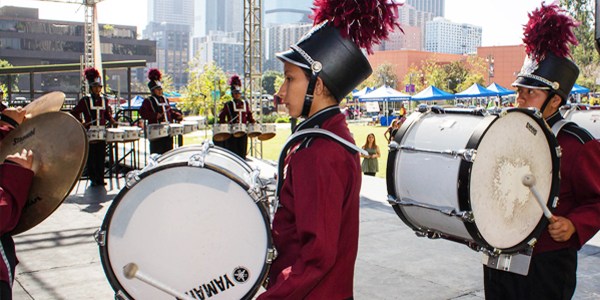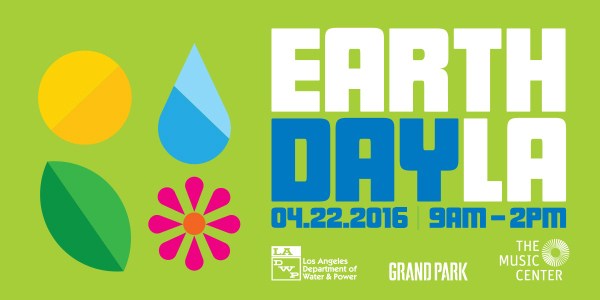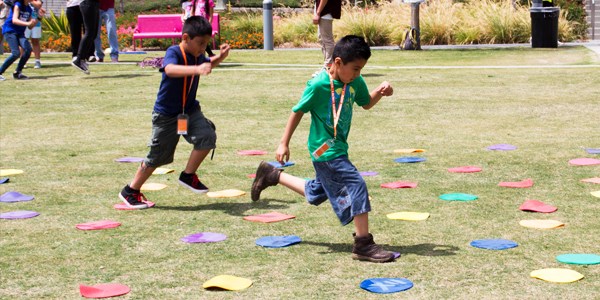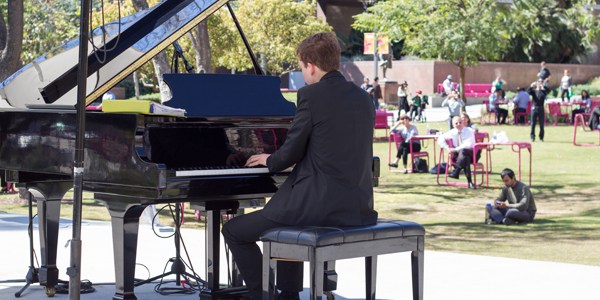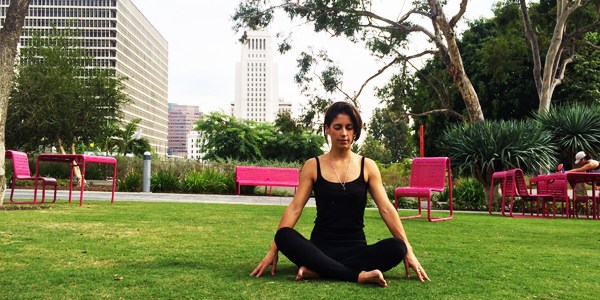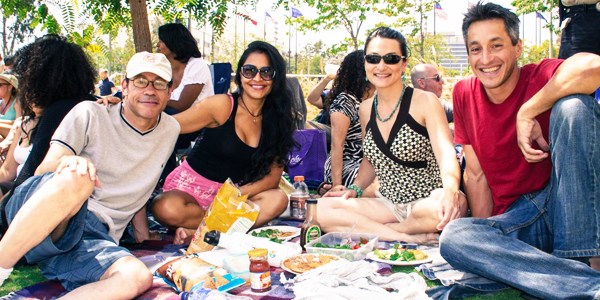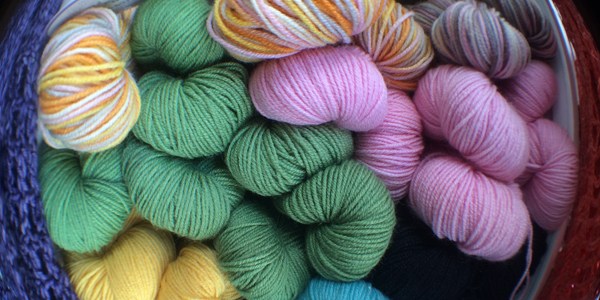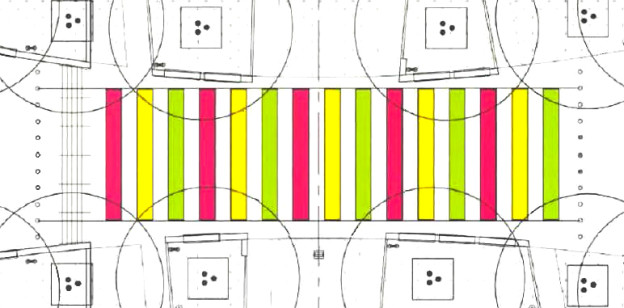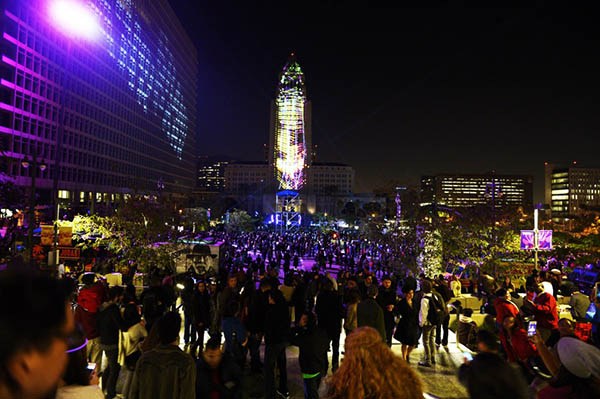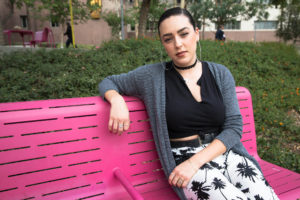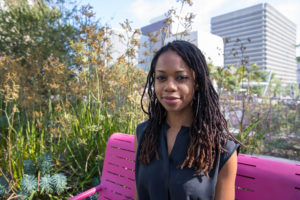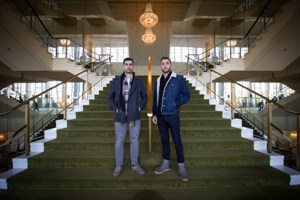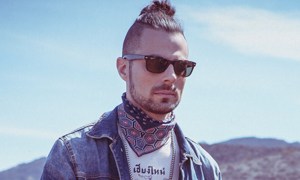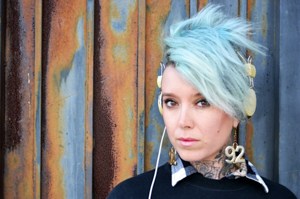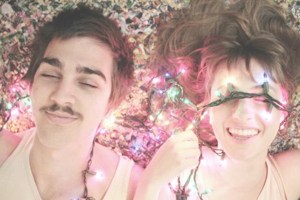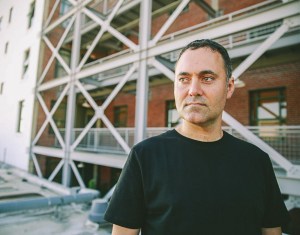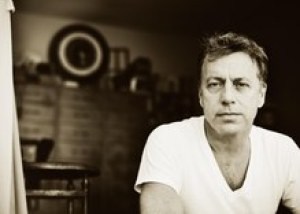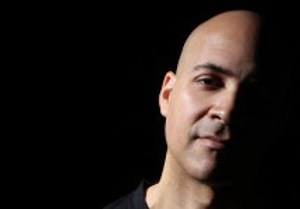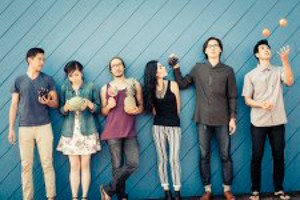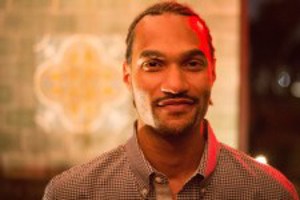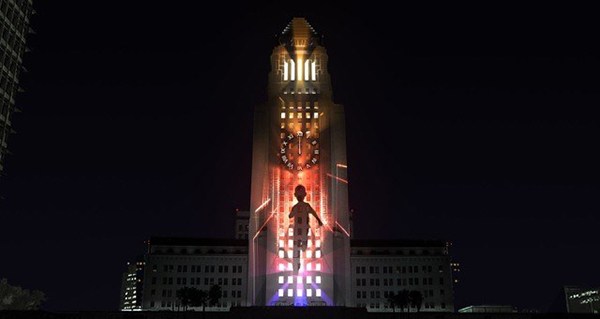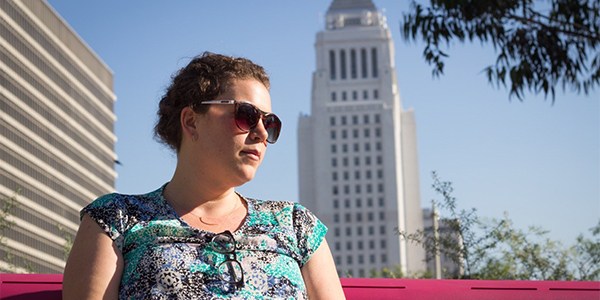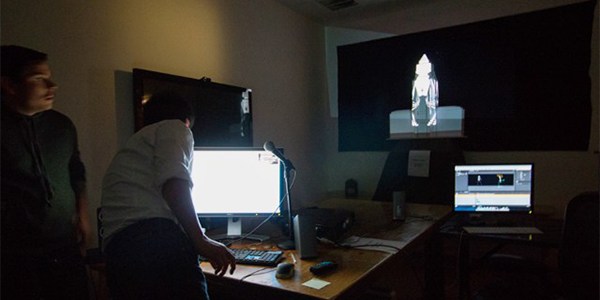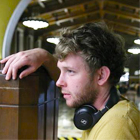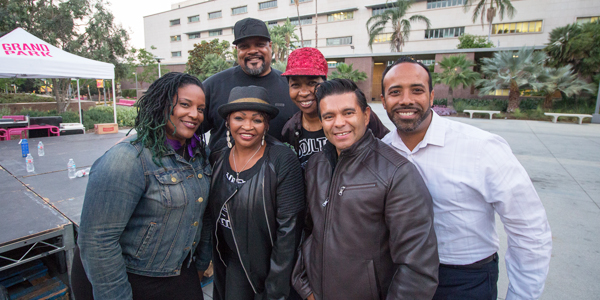
Left – right. Dr. Imani Kai Johnson, Thelma Davis, Dr. Rennie Harris, Damita Jo Freeman, Lil’ Cesar Rivas, Lucas Rivera
On Thursday June 16th at 6pm, in Olive Court at Grand Park, the dynamic panel “Ain’t No Half Steppin,” thoroughly educated and entertained the crowd of b-boys, b-girls, Angelenos and passerby’s who stopped to listen the panelists break down the evolution of street dance. The tone was immediately set by Grand Park’s Director Lucas Rivera when he introduced the panel by saying, “Grand Park is the only place where head spins and ballet slippers fit on the same stage.” This inclusive spirit defined the panel and their action-packed discussion.
The conversation was moderated by Dr. Imani Kai Johnson, an interdisciplinary scholar, professor at UC Riverside and leading voice on Hip-Hop dance in international communities. Dr. Johnson was joined by Damita Jo Freeman, one of the original “Soul Train” dancers, Thalma Davis, also one of the original “Soul Train” dancers, Julio Lil’ Cesar Rivas, the founder of the Hip-Hop School of the Arts in Pomona and an original Los Angeles b-boy dating back to Radiotron in the early 1980s and Dr. Rennie Harris, the founder, artistic director and choreographer of one of the most influential Hip-Hop dance companies.
The Story Must Be Told By Those Who Were There
In the course of their nearly-90 minute conversation, the panelists not only discussed the evolution of street dance, they discussed the importance of getting the story right. One of the key themes of their dialogue was that, “if the story is not told by the people who know it, the facts and details will be twisted incorrectly and not represent what actually happened.” They each told their story with heartfelt authenticity and the audience enjoyed every minute of it.
To this end, each of the panelists talked about their own history with street dance. Thelma Davis and Damita Jo Freeman talked about how they began as “Soul Train” dancers at 17 years old in 1971. Davis noted that her parents were activists and that her dancing was informed by the Civil Rights Movement, the Blaxploitation era and all of the spirit that was in the air in the early 1970s. She also mentioned that she had been dancing as a ballerina from her early childhood and that her own style melted ballet, freestyle, jazz and evolved into its own amalgamation that Don Cornelius, the host of “Soul Train” allowed her to express on the show’s stage every week. As time went on, Davis opened up for the Jackson 5 and did choreography for a wide range of artists.
Damita Jo Freeman echoed many of the same thoughts as her longtime friend Davis. Freeman not only danced on “Soul Train,” she also had a background in ballet and danced in Los Angeles clubs like Maverick’s Flat and The Climax. As her career went on, she crossed paths with James Brown, Cher, Lionel Richie and countless other artists as she danced and choreographed on television and with events like the American Music Awards and the Soul Train Music Awards. Both Freeman and Davis described their formative years as, “a period of awakening.” Above all, they said their dancing came from the heart and was about having fun. They also said that they were never competitive, it was about building rapport, finding identity and sharing spirit. They also stressed the importance of “Soul Train,” in the transmission of street dance and the fashion across the country.
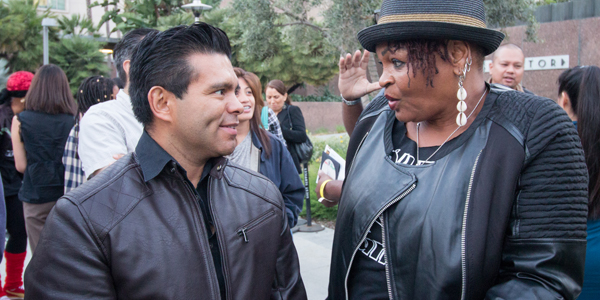
Lil’ Cesar Rivas agreed with them both about the influence of “Soul Train.” He spoke of watching the show in El Salvador when he was 7 years old in the late 1970s, a few years before he would move to Los Angeles. Rivas would go on to become one of the most influential b-boy dancers in Los Angeles, the founder of the Air Force Crew, a performer in the film “Electric Boogaloo,” and one of the key participants in Radiotron, the seminal space located across from MacArthur Park in the mid-1980s. Rivas spoke of an influential moment in his life that led him to begin the Hip-Hop School of the Arts in 2007-2008. The turning point for him was in 2007 when he was flown to Korea to participate in a huge event to celebrate Hip-Hop dance. Korean politicians spent 2 million dollars and brought artists from 16 countries to Seoul to participate in a monumental Hip-Hop festival. He wondered way Hip-Hop did not get this type of love in America.
The experience was life changing and it made him come home with the desire to document the history of Hip-Hop. He started collecting all of the books and films ever made about Hip-Hop. “I wanted to create a Hip-Hop library,” he said. From this inspiration, he put a proposal together and started the Hip-Hop School of the Arts in Pomona to chronicle the movement’s history and carry on the spirit to the next generation.
Dr. Rennie Harris shared this intention of documenting the history of street dance as well. He explained his youth in Philadelphia and his early years in dance. He also noted that in different cities, street dance was called different names and had subtle differences. In Philly it was “GQ” dance, in Washington D.C., there was “GoGo,” in Chicago it was “House,” and the West Coast he said was about dancing to funk like Parliament and Funkadelic. Harris noted that the term “Hip-Hop” was first used in a historical context in a 1981 Village Voice article. He essentially said that many of the participants never named it because they were too busy doing it.
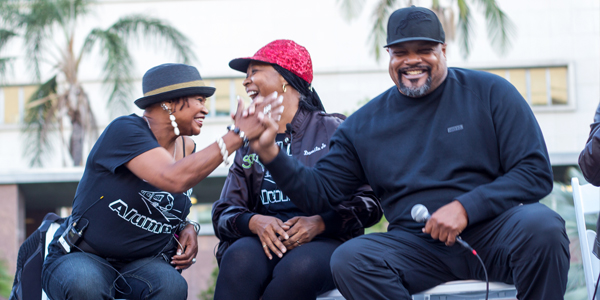
Harris had danced with groups like Run DMC and others in the early 1980s, but he the said the life changing moment for him that led him into more choreography and dance theater was sometime in 1990 when he was approached to choreograph a Hip-Hop dance routine for $1500. This made him realize that his lifelong participation in dance was meaningful to the world at large. From this time, he began to organize experimental theatrical dance productions he called, “Black Performance Art,” where he would have dancers responding to work by the Last Poets and other similar thoughtful work. He aimed to tackle racism and wanted to use dance as a force for social justice. Before he knew it, he was doing events at the Lincoln Center and the Brooklyn Academy of Music. Harris shared that he even had some of his shows picketed because they were too incendiary for some audience members. Harris has gone on to teach at UCLA and the University of Colorado at Boulder and he continues to choreograph and speak on dance around the world. He sees Hip-Hop as the most original American art form.
At one point early on in the panel, Harris and Davis debated about the influence of “Soul Train” versus dance in smaller community venues. Davis emphasized that since “Soul Train,” had a national television audience, it spread the spirit of street dance around the world very quickly through the 1970s and 1980s. Harris did not disagree with this, but he said that many of the street dancers in various cities around America were so engaged in their local community, that early on, the movement was not named, they were just young people having fun and doing their best to express individuality and innovation. After some playful dialogue, they came to the agreement that the roots of street dance were in the generations even before them. One of them noted that there were people doing the Moonwalk in the 1930s.
As the panel concluded, Dr. Johnson asked each of the panelists how dance connected them to politics.
Rennie Harris said, “Dance is the most dangerous art form because it is movement.” The visceral and immediate nature of dance makes it timeless because it happens in the moment. Rivas noted that in 1985 when the city tried to shut down Radiotron, all of the dancers he was with marched to City Hall to oppose this. He said that their desire to keep b-boying made them political in that moment because they realized how important Radiotron had been to their own growth and identity. Harris and Freeman reiterated what they had said about dance leading to their awakening.
All and all, the panelists closed the discussion by saying, “Its 2016 and we are still dancing.” The audience gave them a standing ovation, many photos were taken, a few moves were captured on film and everyone went home happy as the sun slowly set over Grand Park.
Mike the Poet, guest blogger/social media host #hiphop4days
https://vimeo.com/171174683

